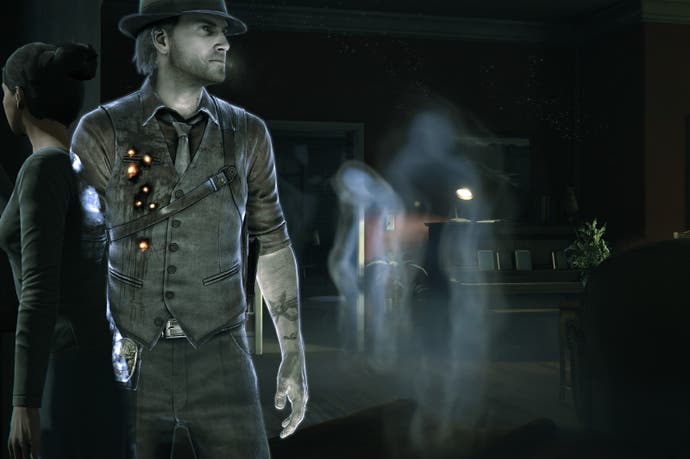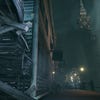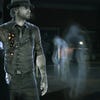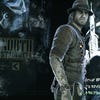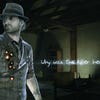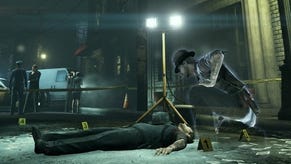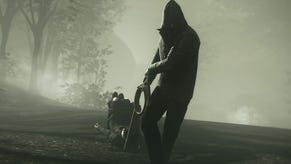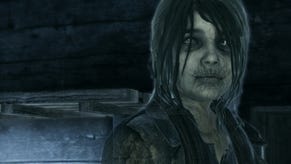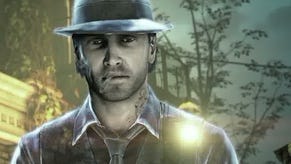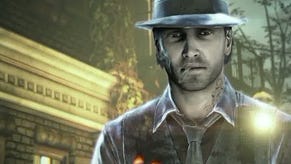Airtight on Murdered: Soul Suspect, its next-gen port and Die Hard
"We're not going down the rabbit hole of all the new features that the platforms use."
The PlayStation 4 and Xbox One versions of Murdered: Soul Suspect offer a "higher fidelity experience", developer Airtight has said.
Expect the next-gen console version to offer a visual upgrade in-line with what the PC version can offer, with a higher native 1080p resolution, subsurface scattering and an increased particle count. But don't expect the quirky spooky murder mystery - built on Unreal Engine 3 - to make use of some of the PS4 and Xbox One's more unique features.
Airtight decided to focus on porting the game across to the PS4 and Xbox One as is, rather than add things like motion control and voice commands.
"We're not going down the rabbit hole of all the new features that the platforms use," Airtight senior game design producer Eric Studer told Eurogamer.
"Instead we're using the opportunity to focus on the game still, make sure the experience is uniform across the different platforms, but use the new technology to create a slightly higher fidelity experience on Xbox One and PS4."
Studer continued: "We made a decision to focus primarily on just the technical merits of it. We didn't want to fracture ourselves and start trying to create all these new things for the new platforms and potentially undermine the experience.
"We want to make sure if you play on Xbox One and PS4, you get the same story and the world we've created for the other versions."
The Xbox One and PlayStation 4 versions of the game were announced earlier in February. The game had originally been planned for PC, PlayStation 3 and Xbox 360. All versions launch in June 2014.
The decision to port the game to next-gen came after both consoles were released in November, Studer said.
"When the game went into development next-gen consoles weren't around," he said. "They weren't a thing. We knew they were on the horizon, but rather than jump off the cliff in terms of this new technology, we wanted to use what we understood and build the game based on that. So the decision was to go with the Xbox 360 and the PS3.
"However, when the systems launched last November, it was a good opportunity. We were in the right space to explore the potential of going for the next-gen platforms. And so we started researching it and we thought, yeah, we can do this.
"There definitely were challenges. They're whole new platforms so there are things you have to learn. But we're going to make it, so obviously it wasn't an impossible task to overcome!"
Murdered is yet another change of style for Airtight, whose credits include the cover-based shooter meets air combat game Dark Void for Capcom and the puzzle platformer Quantum Conundrum for Square Enix.
"It's always interesting in Airtight," Studer said. "We tend to always go in different directions. We haven't really settled on one thing we want to do over and over again. It's always about, we want to do what seems interesting, what seems fun. So we tend to take a zig-zagging line on the games we work on."
Airtight's work with Square Enix continued when the Japanese publisher approached the developer about an idea designer Yosuke Shiokawa had for a video game - sparked by watching Hollywood blockbuster action movie Die Hard.
"He was thinking about interesting ghost stories and coincidentally was watching the movie Die Hard," Studer revealed. "It wasn't so much the action of the movie, it was more about the tenacity of the character John McClane, his willpower and his strength of character.
"Shiokawa-san thought, well what if McClane had become a ghost trapped in this building? Because of who he is as a man he wouldn't just give up. He wouldn't just stop. He'd continue fighting. He'd continue finding a way to overcome his new limitations and bring his killers to justice.
"That was the start of it all. This strength of the character and then this desire to tell an interesting mystery ghost story."
Square Enix then approached Airtight with Shiokawa's idea. After working on a few prototypes, a deal was signed. Airtight and Shiokawa have been working together since.
"Shiokawa-san thought, well what if McClane had become a ghost trapped in this building? Because of who he is as a man he wouldn't just give up. He wouldn't just stop. He'd continue fighting."
Airtight senior game design producer Eric Studer
Murdered: Soul Suspect is a game that rekindles memories of Capcom's 2010 adventure game Ghost Trick. You play murdered Salem detective Ronan O'Connor, who hunts down his killer as a ghost in the limbo world of Dusk.
The game is divided into episodes with a series of cases for O'Connor to solve. There's a curious investigation system that involves inspecting a crime scene, possessing people to uncover new information and gathering evidence before arriving at a solution.
It's a relatively slow-paced affair - a deliberate ploy, according to Airtight.
"Our game is intentionally slower paced," Studer said. "It's intentionally more of a slower burn, because we want to build the tension and threat and mystery and intrigue.
"We also spend a lot of time with the first chapter doing introduction to the world. It's important for the player to understand what he can and can't do. If we just throw you off into the deep end we risk players being frustrated or confused early.
"And so it was a very intentional decision to focus on the story and the introduction to the character and the world rather than jump you off a cliff right away."
Spliced into the detective work are stealth sections. As a Ghost O'Connor can explore buildings unseen by the living, but demons stalk the world of Dust, hunting prey. These powerful beings must be executed by creeping up behind them - or avoided altogether.
"These are absolutely designed as a way of helping break up the pacing so the player doesn't get fatigued just walking from location to location doing case after case," Studer explained. "It keeps them on their toes. It keeps them a little bit unsure of what's going to happen next.
"We're not an action game, though. We're not trying to make this really hard, visceral combat. We want it to be much more cerebral. We want the player thinking about these encounters, thinking about the spaces and building a strategy similar to what they would do in one of the investigations."
